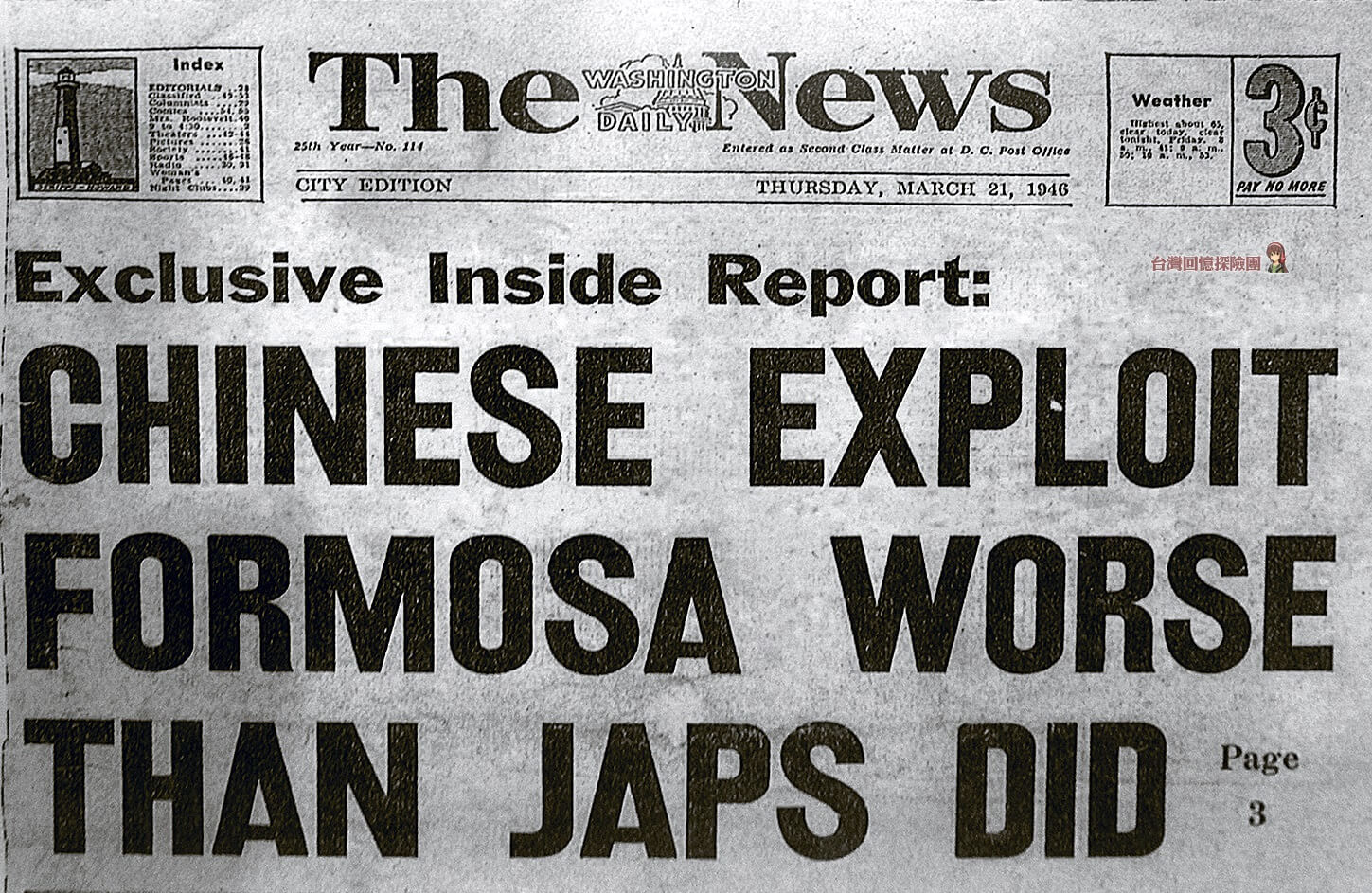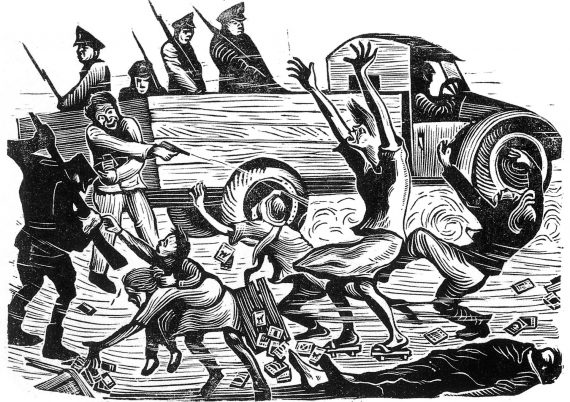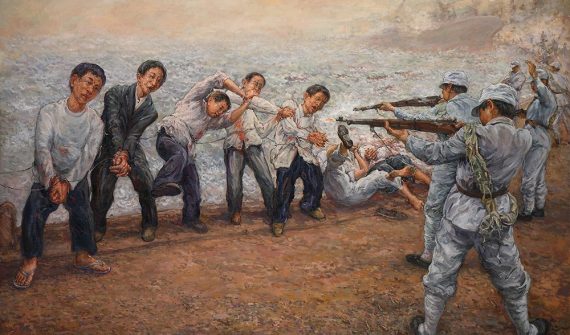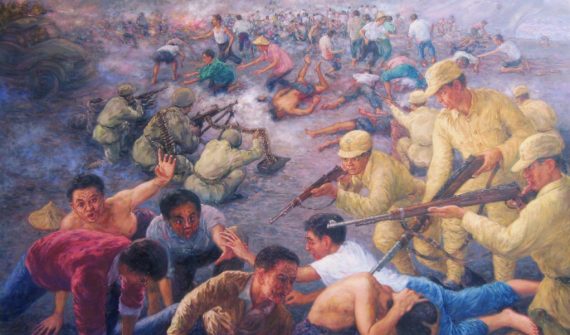
The “February 28th Massacre” was a long-kept secret. For decades it was forbidden and dangerous to even whisper about it. Even now, some elements wish to downplay the months-long massacre as it was the very spark that led to movements that resulted in Taiwan’s democratization and fostered the Taiwanese identity. This site covers how many Taiwanese and expats, young and old, made the ultimate sacrifice for democracy and will be regularly updated with unearthed stories.
“Not a year goes by without something new uncovered about the White Terror period. Lost letters, new atrocities, and more.”
“They not only executed him for speaking out, but also a girl he dated. She had a twin sister, so they killed her too just to make sure.”
“Even the Taiwanese Diaspora were spied upon. It didn’t matter if you studied in America, you had to watch your mouth wherever you were.”
This serves as an introduction that gives an overview of the massacre. It is by no means complete. We will add content every month or so as there are thousands of stories and atrocities uncovered over the decades.

The Washington Daily headlines on March 21st, 1946, nearly a year before the 228 Massacre. There were many Western newspapers that covered the abuse of the Taiwanese people, then often called Formosan including The New York Times, the Pittsburgh Press and more. The language from the 1940s was very different than acceptable now, note the slur used in the title.
A proper name for the massacre is still up in the air. Although the event is often downplayed as the “228 Incident” due to events that began on February 27, 1947, we choose to call the indiscriminate killings of thousands for what it is, the “228 Massacre.”
Although the events of the massacre began on February 27th, the first person to get shot by a Monopoly Bureau official that day, his death only came the next day. But much of the protests began nearly a year earlier, most of the killings on March 1947. This led to some Taiwanese dissidents to call it the March Massacre. The names given were many. It was once derisively labeled the “228 accident” in an attempt to downplay the atrocities. Sometimes it is called the 228 Peace Memorial Incident by those attempting to muddy the severity and devastation. There have even been bad-faith attempts to mix in the the Japanese colonialization era to muddle responsibility among other attempts. Even after the end of martial law and the increasing freedom, for years academics called the massacre, ‘the 228 incident’ because calling it a massacre would attract unwanted state attention.
When WW2 ended in 1945, many Taiwanese people were quite enthusiastic about “coming back to motherland” due to years of struggle to gain regional autonomous status under Japan’s provisional government and the harsher administration Japanization during wartime. They believed the ROC government, a supposed cultural relative, would understand them better, respect them more, and fit their needs better.
They couldn’t be more wrong.
The ROC government was still an authoritarian, de facto one-party regime lead by KMT, with Chiang Kai Shek as its highest leader. Regarding China as their core interest, this government had little to no interest in properly ruling Taiwan, an already developed and semi-industrialized region. So the KMT treated it as more of a hen that can be squeezed for golden eggs—they pushed a state-controlled market centered around Chinese officials and looted the existing industry (mainly sugar, which Taiwan was among the largest exporters of in the world at the time). The mismanagement triggered massive inflation and nearly caused an artificial famine due to the sky-rocketing price of foods and shortages in other commodities since most resources had been seized indiscriminately to be redistributed to China.
Worse, Chen Yi appointed his friends and relatives as provisional government officials. The rest were bureaucrats to common foot soldiers, were usually corrupt, relatively illiterate, ill-disciplined, and primarily Mandarin-speaking, which contrasted with the Imperial Japanese government’s more efficient bureaucratic system that included literate and educated Taiwanese people. Usually, these officials would be able to communicate in Taiwanese Hokkien/Hakka and Japanese. The contrast had deepened the disappointment and discontent of the Taiwanese people. The backlash from mass looting, indiscriminate beatings, rapes, and more led to widespread social unrest, and many Taiwanese started to ask themselves if the Chinese were really their brethren or not.

The Terrible Inspection, a woodcut by Huang Rong-can depicting the events of February 27, 1947

On February 27, 1947, a Tobacco Monopoly Bureau enforcement team in Taipei went to the district of Taiheichō (太平町), Twatutia, where they confiscated contraband cigarettes, which like many other commodities were at that time became state-owned, thus illegal to sell directly. They seized cigarettes from a 40-year-old widow named Lin Jiang-mai (林江邁) at the Tianma Tea House (天馬茶屋). Lin was brutally knocked out, which attracted an angry crowd, and a shot from the enforcement team killed a civilian. Within 24 hours, the incident soon escalated to a full-blown protest in front of the Provisional Government office after. Soldiers tried to suppress the situation by shooting the protesters, which invoked further unrest across the island. Already discontent about the situation, different groups (including high school students, local autonomous groups) in Taiwan rose up, even taking control of the local government arsenal. Unfortunately, some violence against Chinese communities began to sprout in various locations. Due to the fear of increasing unrest and possible dissolution of social order, local autonomous groups, gentries, and representatives stood out after a few days. They formed 228 Incidents Settlement Committee (二二八處理委員會). They calmed the angry crowds, regulated local militia to secure order, and contacted the Provisional Government and its chairperson Chen Yi (陳儀), hoping to arrange negotiations and resolve the incidents and other governing problems, to which Chen agreed.
Or at least, that’s what Chen told them.

Once ROC troops arrived in Keelung, they began to immediately slaughter anyone they encountered. Estimates by international reporters were that tens of thousands were murdered across Taiwan. Illustration by Professor Shih Ping-Hsi 施並錫
While officially the Cleansing and its concluding was over on May 16, the suppression of Taiwanese had lasted long after that. Following the defeat of the Chinese Civil War in 1949, the ROC government entered its martial law era, called the White Terror. The 228 massacre became taboo to whisper, with records and photos destroyed. Taiwanese identity also became a forbidden topic during the White Terror era. Many more Taiwanese would be arrested, tortured, and executed. Many of them escaped to foreign nations, usually the USA or Japan, and formed Taiwanese diaspora communities during the 60s. It was not until 1995, six years after the end of martial law, that the ROC government, led by Lee Teng-hui, officially issued an apology and started to investigate and offer compensation to the victims. And 228, like many other scars caused by the ROC government onto Taiwanese, is now the cornerstone of Taiwanese identity, something to remind us that what an authoritarian Chinese government was, and it can be if it was run by those who put China’s interest in-front of everything else.
The 228 Massacre was a complex chain of events that brought out fierce leaders, some that paid the ultimate price, to bring democracy to Taiwan. The battle for freedom occurred not only in Taiwan but abroad as organizations fought to pressure the Chinese Nationalist Party into loosening its grip.
Taiwanese demonstrated valiantly for peace and democracy during the decades following, eventually gaining their right to rule themselves. Here we follow stories of those that devised creative means to call for help and get an authoritarian government to back down.
There were many important Taiwanese thinkers and leaders that were murdered or imprisoned or blacklisted during and after the 228 Massacre. We will add them here over time.
The 228 Massacre Info Project was started and led by an amalgamation of Taiwanese, diaspora, and expats in hopes to explain, share, and examine the stories of 228 and the various subsequent movements that led to Taiwan’s democratization.